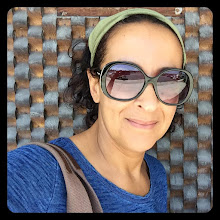Alternative Photography Printing
I took a workshop over the week-end at the UCSD Arts & Crafts Center and discovered photo emulsion transfers and lifts processes. The workshop was 4 hours-long and got me so excited that I spent the next day on eBay bidding on equipment and supplies to assemble my own daytime darkroom.
The transfer and lift processes involve copying slides onto Polaroid film and then transferring the image (at various stages of development depending on the process used) to a receptor medium, in this case watercolor paper, but the process can be used on almost any medium, ie: silk wood, plastic etc
Emulsion transfers involve the application of the negative portion of the Polaroid film after a 10 to 15 seconds development time (vs. 1+ minute for complete development)to a receptor. There are 2 types of transfers; wet transfers (easiest process) and dry transfers (trickier). Transfers usually give your photos a painting look. Wet transfers involve soaking watercolor paper in hot water first before applying the under-developed negative. The positive portion can be saved for lifts. The dry process is similar; the paper receptor is not soaked in water prior to transfer, which makes it more delicate process to handle.
Emulsion lifts are performed after full development of the Polaroid film. The image is then transferred to a hot water container for approximately 5 minutes until the emulsion starts to detach itself. The photo is then transferred to a lukewarm bath where the emulsion is first separated from the photo paper, cleaned of any gelatin residue then transposed into a receptor.
The upside of these processes resides with the fact that they can be performed in daylight without too high of an initial investment. The main cost, is purchasing an instant slide printer to copy slides to Polaroid Film. I purchased a Vivitar for approximately $80 (including shipping). I should be receiving it in the next few days and will be posting final prints for each one of the processes described above. Meanwhile, here is a good resource if you'd like more information or you can e-mail me with questions.

